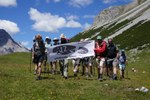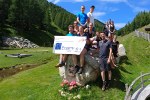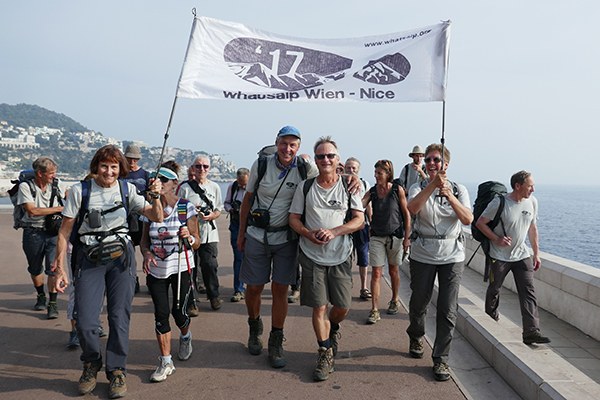News
Reaching a conclusion: whatsalp arrives in Nice
Under the name “whatsalp”, since 3 June 2017 a group of Alpine experts has been walking from the Austrian capital Vienna, through Austria, Switzerland, France, Italy and finally to the French city of Nice. They documented the state of the Alps and exchanged views with local people. The core group was at various stages accompanied en route by some 200 fellow walkers, including young people from the CIPRA project “whatsalp youth”. The intention was to draw a comparison with the 1992 “TransALPedes” crossing of the Alps. CIPRA International and the Alpine Initiative accompanied whatsalp as project partners.
Whatsalp reached the French Mediterranean coast on 29 September. Its first conclusion was that the Alps came across as a diverse and exciting region. While some areas are witnessing rapid population growth, other areas are increasingly suffering from emigration. Compared to 1992, the younger generation in mountain areas today enjoys much less in terms of representation. Harry Spiess of the whatsalp core team is now calling for regionally adapted strategies to make the Alpine regions more attractive as places to live and work.
Shrinking glaciers, rock falls, extra infrastructure in the ski resorts: the effects of climate change in the Alps are all-pervasive. The need, according to the team, is for more consistent solutions. Differing strategies in the areas of tourism, forestry and agriculture were having direct effects on the Alpine landscape. In the words of Whatsalp member Dominik Siegrist, “Alpine tourism needs urgent reform to shift it more towards sustainability!”.
Detailed, country-specific conclusions about the “whatsalp” project, including as regards the growing traffic problem in the Alps, can be found under https://whatsalp.org/de/medien.
Sources and further information:
https://whatsalp.org , www.cipra.org/en/cipra/international/projects/current/whatsalp , www.cipra.org/en/cipra/international/projects/current/whatsalps-youth, http://www.voyageons-autrement.com/quels-resultats-apres-la-randonnee-what-s-alp (fr)




